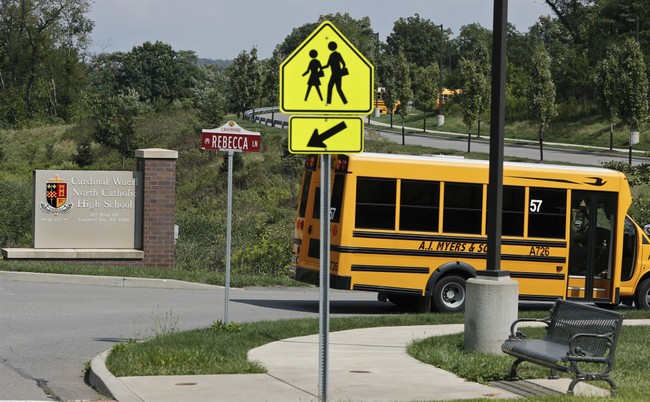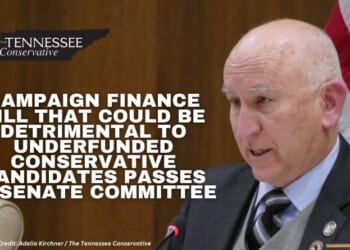
One of the many, many painful hangovers from the Biden administration that blue states are going to have to work through – without the aid of ibuprofen and/or copious amounts of alcohol – is going to be what to do now when the Green grifting dollars they gobbled up so greedily vanish.
And I guarantee you, they will.
When a state has thrown itself into a complete transition of its energy and transportation profile, based solely on pie-in-the-sky disputed data and what seemed like an unending flow of lucre from the cultists funding it, yeah – I get it.
It’s easy to become a bought-and-paid-for ‘believer.’
But that’s not your job as an elected official.
Your job, first and foremost, is to safeguard the welfare of the citizens who elected you, and not just at the moment, rain or shine. Ensuring their future isn’t compromised by rash moves you made in pursuit of pipedreams and money grabs.
Prudent and extensive consideration should be the measuring stick before committing any state – or community – to drastic, expensive, unproven, and non-critical transitions – particularly when such transitions seem to be wholly dependent on money arriving from outside sources to fund the switchover.
Who pays for it when it doesn’t work out?
TurnMDRed sent me a little news blurb last night that got me thinking about that aspect of the Biden Green New Deal gluttony.
Remember this?
Kamala Harris says that by 2035 all school buses will be electric because of her Green New Deal program which costs $5B.
In 3 years Kamala’s efforts have produced 60 electric school buses.
The US has about 500,000 non-electric school buses. pic.twitter.com/vIa30PuDU2
— Paul A. Szypula 🇺🇸 (@Bubblebathgirl) August 14, 2024
They were shoveling a lot of money out the door to get school districts swapped over – and dependent on – electric school buses.
…As part of the first tranche of Clean School Bus program funding two years ago, Harris and EPA administrator Michael Regan unleashed nearly $1 billion in federal rebates for 389 school districts across all 50 states to help deliver a total 2,463 electric school buses. According to federal data reviewed by the Washington Free Beacon, just 27 of those districts have proven to the EPA that their buses were delivered and that their diesel-fueled buses being replaced have been discarded.
…Based on the EPA’s funding calculus, the average new school bus under the Clean School Bus program costs upwards of $370,000, more than three times the cost of a traditional diesel bus. That implies the cost to replace the entire U.S. fleet of 547,000 yellow school buses with electric alternatives would exceed $202 billion.
Kenny Bell, the superintendent of Wolfe County School District in central Kentucky, which received $1.2 million from the EPA to purchase three electric buses, also reported satisfaction with the vehicles, once they were provided free of charge. “We love our electric buses,” Bell said.
Delighted that the school district ‘loved’ theirs. Other districts did not feel similarly, either falling short of the money to purchase them, to begin with – the things are damned expensive – or realizing that districts in colder climes would be at a serious disadvantage with vehicles that do not like cold weather, as getting the kids safely to and from school is the paramount mission of a school bus, to begin with.
…”We get super cold in the winter—we get down below zero in the winter and it’s cold here about nine months out of the year,” he continued. “Basically, we’re being told that you can’t run the heaters, which means you can’t defrost your windows because they take too much battery power. So, we were told they would get 200 miles on a charge, but the people in the field were telling us 70 with a loaded bus. That just doesn’t work.”
The superintendent of Fall River Joint Unified School District, which is also located in California, about 90 miles west of Modoc School District, echoed O’Malley’s concerns. Fall River didn’t receive any EPA funding for electric buses.
“We don’t want to put kids on a bus that’s not guaranteed to be able to get there, especially here in the rural areas,” Fall River superintendent Morgan Nugent told the Free Beacon, adding that relying on electric buses would take his district back to the “Pony Express days.” “Those who are making the policies need to get out to actually see how this is going to impact the rest of the country.”
The gobsmacking amounts of money involved is well-nigh irresistible and can lead some school districts astray.
Electric school bus fraud, waste and disaster in Montgomery Country, MD:
– The county contracted to buy 326 electric school buses at a cost of $517,000 each.
– But late deliveries, and mechanical and charging problems forced the county to buy 90 new diesel buses at a cost of… pic.twitter.com/TaqA82nWMn
— Steve Milloy (@JunkScience) July 31, 2024
The very diesel buses their greedy malfeasance forced the county into buying will wind up saving them buckets in the long run. Happy accident there.
Speaking of colder climes, Massachusetts has a #supergreen governor who is hellbent on changing the state to a climate cult oasis, conveniently accomplished with a majority tax dollar infusion from you and me.
…“Every Massachusetts student deserves to breathe clean air, but diesel school buses are a major source of air pollution and can be harmful to young people’s health,” said Governor Healey. “We’re thrilled to see so many Massachusetts communities win federal funding to make the switch to cleaner electric school buses. We’re grateful to the Biden-Harris Administration for making this funding available and to Senator Warren and our Congressional delegation for their partnership and leadership.”
“This is just the latest example of how Team Massachusetts is competing hard to bring home federal dollars to our communities,” said Lieutenant Governor Kim Driscoll. “From improving our roads and bridges, to increasing accessibility on public transit, to transitioning to cleaner, healthier school buses – the Biden-Harris administration is making available transformative levels of federal funding, and we’re proud that Massachusetts is winning so much of it.”
“These new electric school buses from the Biden administration are bright yellow symbols of how Massachusetts is fighting climate change,” said Senator Elizabeth Warren. “I wrote a bill to invest in cleaner transit options and fought for federal funding in the Bipartisan Infrastructure Law, and now these electric school buses will help Massachusetts students breathe cleaner air.”
City of Boston goal is to have the entire school bus fleet to be electric by 2030 but electric school buses cost $350K compared with $100K for diesel. City took delivery of at least 18 and in April 2024 ordered 80 more electric buses #bospoli pic.twitter.com/ZkIMVeiG1A
— JohnFGately (@johnfgately) September 10, 2024
Coincidentally, this is where TurnMDRed’s ‘Yo, Beege!‘ comes in.
As we watched eight inches of global warming settle gently down around us here in balmy Pensacola, temperatures in Wilbraham, MA, were hanging around the zero mark. Extremes make fighting fires difficult, especially when four or five electric school buses decide to go up all on their own in the early morning hours in the school district bus garage. A passerby saw the flames and called 911.
Huh – wonder what happened, right?
Worse, these were brand spanking new, never-been-in-service expensive electric buses.
…Firefighters were able to get the fire under control in approximately 45 minutes, while also dealing with temperatures that hovered around zero degrees. Work continued to put out hotspots for more than two hours.
Mutual aid was called in from the Ludlow, Palmer, and East Longmeadow fire departments. A rehab unit from the Massachusetts Department of Fire Services also responded to help the firefighters.
Hampden-Wilbraham Regional Schools Supt. John Provost said that the buses were “new electric buses that had not yet been placed in service.” In addition, the incident caused Hampden-Wilbraham Regional Schools and Ludlow Public Schools to have a two-hour delay on Tuesday.
HOLY SMOKING MONEY BURN PIT
Did you and I pay for all of them, or is the school district now out God knows how much money and still has at least five buses to replace?
At least there were no injuries, and thank God. I mean – what if kids had been on one of these things when they lit off for whatever reason?
Well, you’d better hope the driver has a good nose for ‘burning plastic’ and has the presence of mind to get all the kids the hell off the thing, like the hero driving this electric school bus outside of Huntsville, AL, just *checks notes* a little over a week ago.
Now, THAT’S a fire.
In this case, the Lord was with them, both having an amazing, alert driver and the fact that the bus’s battery wasn’t ‘compromised,’ as they put it. It could have been so much worse.
According to reports about the Huntsville school bus (and rumors of an earlier November incident), there was quite a pile of American tax dollars wrapped in that flaming yellow bus.
In a fitting development, an electric school bus from the now-insolvent and heavily subsidized Lion Electric has caught fire. The children all were evacuated and are thankfully safe, along with the driver. https://t.co/9dRqRgO2Hc pic.twitter.com/wjC17K716w
— Andy Lee (@RealAndyLeeShow) January 13, 2025
Ah, Lion. Kennebec, Maine was having a great time with those buses as early as a year ago. Steering failures – all sorts of non-trivial incidents.
Several recently acquired electric school buses have been pulled off the road as a result of potentially dangerous malfunctions and premature signs of wear.
According to the Kennebec Journal, the buses in question were manufactured by the Canadian-based company Lion Electric and provided at no cost through the U.S. Environmental Protection Agency’s (EPA) $5 billion Clean School Bus Program that was launched in October of 2022.
As part of this program, school districts in Winthrop, Bingham, Mount Desert Island, and Yarmouth, among others, were given Lion Electric buses as part of the nationwide goal of electrifying 75 percent of the public school fleet by 2035.
For each electric bus received, the districts reportedly agreed to give up one of their current diesel-powered buses.
Buses in both Winthrop and Vinalhaven have reportedly exhibited wear consistent with older, higher-mileage vehicles — not those that have been driven less than 1,000 miles.
Winthrop officials told the Journal that these buses “came with misaligned or incorrect wording on the side of the buses” and had leaky windshields within six weeks.
And yet here we are, nearly incinerating children in Alabama.
Huntsville was all ‘Yay, electric buses!‘ just this past October, and all purchased on the American taxpayer’s dime.
The Huntsville City School district will be replacing 25 traditional school buses with new electric ones.
This is all from a nearly half-billion-dollar grant from the federal government.
First Student, the company that supplies the district with buses, already has over 360 buses in its fleet. The 25 new buses coming to Huntsville will cost nothing to the district or the taxpayers.
The grant also covers the charging stations for the buses, which take about 6 hours to fully charge. This initiative comes on the heels of the EPA’s clean school bus program.
I hate to break it to the city, but they’ve already cost somebody something. If their shiny electric buses burn up every now and then – or a couple at a pop – I don’t believe they will find any more cash for replacements at the Trump EPA. The trough that once looked to overflow eternally is empty.
This is going to be a helluva wake-up call to taxpayers in blue-dominated areas who were assured they’d never have to pay for any of these Green grifting wonders. The government was buying all the new toys.
Even if it meant barbecuing a couple of kids along the way, that was worth the sacrifice to appease the NetZero gods.
Better start saving pennies for the lean times that are coming, guys.









